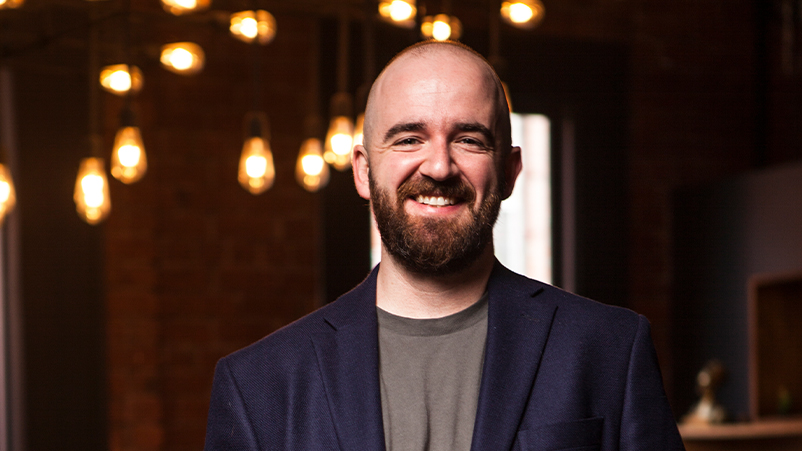Do the MAFS: Three separate teams for one TV buy? That’s not good for the viewer, brand or agency.

The possibilities in the broadcast video on-demand (BVOD) space for audience addressability and reduced wastage are genuinely exciting,.
TV viewers don’t care how the advertising sausage is made – all they know is an ad break will appear at the moment of highest tension. Behind the scenes, however, there are often three separate teams putting a TV buy through: TV planners, an investment team and ‘jack of all trade’ programmatic traders, Atomic 212°’s Rory Heffernan writes. It’s time to remove the partitions and plan for all viewers, including those catching up on BVOD days or weeks later.
When Married At First Sight first graced our screens for 2022 in late January, the reported overnight metropolitan audience of 869,000 was the lowest the ratings juggernaut had recorded for its premiere in four years.
There were a number of ways to spin it. The most obvious was that the increased levels of mobility and freedom we’ve had so far in 2022 have provided audiences with more options – including the option of switching off.
But as we all know, the first time a show hits our screens is no longer the only time we have a chance to watch it.
When catch-up TV figures, as well as regional audiences, were included a few weeks after the show’s premiere, OzTAM was supplying a figure of 1.9 million – more than double the overnight ratings, with almost 500,000 of those additional viewers having watched the program via catch-up.
That’s more than a quarter of the audience watching on-demand, rather than on linear TV.
Linear or Digital? At the end of the day, they’re still ads
That’s a quarter of a large audience that are still being served ads, hopefully for brands and products relevant to them. The possibilities in the broadcast video on-demand (BVOD) space for audience addressability and reduced wastage are genuinely exciting, but it’s fair to say that both Linear and Digital audiences are usually just waiting for the ads to end and their show to return.
My point is that this significant on-demand audience is ultimately the same as the other three-quarters. They don’t care how the proverbial sausage is made, they just know that at points of the highest dramatic tension in their show (be that a cheating reveal or a smashed glass!), the network will cut to a commercial break.
Yet behind the scenes, there’s an entirely different system serving ads to those who watch linear TV compared to those who choose to get their MAFS fix in the hours, days or weeks after it has been on air. So while audiences and consumption patterns have continued to evolve, the way the media is bought and sold hasn’t necessarily kept pace.
Different teams, different metrics, same outcomes
In an agency, you might have three teams all “buying TV“ in one way or another: A planning team, an investment team, and Programmatic traders, who used to focus on driving the best results out of a display buy, but are now well and truly jacks of all trades – buying video, audio, TV and out of home.
These are worlds of expertise colliding. But the systems, processes and currencies used in the buying journey for both linear and digital TV are still worlds apart. VOZ is still a work in progress. Booking and optimising linear TV is still a manual, burdensome process bought directly with each individual network and market. At the same time, it’s likely to be a different team activating addressable audiences against BVOD and CTV inventory, and they’ll be planning and reporting back on impressions, not Target Audience Rating Points, or TARPs.
It’s two different ways of buying and two different skillsets. The TV and programmatic system use completely different metrics and languages. It’s still not unusual for agency groups to have linear/offline planner-buyers in one office or brand, performance in another, and programmatic somewhere else.
That might be three different handoffs required to achieve the same end goal, and effectively three extra steps between the brand and its audience.
But impressions and TARPs are ultimately a measure of the same thing. And for brands, getting in front of the right audience and demonstrating the impact on business results is what matters.
One team, all screens
Brand-side marketers and agencies inevitably come under pressure to increase media efficiency, reduce cost and report back to the business on return on investment (ROI). Performance & Programmatic specialists have long been used to speaking the language of sales & ROI, so are well positioned to supplement TV planners by bringing this mindset to the channel.
There is a clear opportunity to remove the digital versus traditional divide and move to viewer-led media discussion. By this, I mean aligning to what the viewer experiences, regardless of how that media experience is bought. Focusing on that end point will allow us to better improve speed to market and reduce unnecessary steps between brand and audience.
Removing partitions between channel experts is something that I will be working on, as I’ve come to understand the growing intersection of that Venn diagram.
It is most noticeable in linear TV and BVOD, where the old world of insertion orders and the new world of programmatic intersect and have historically mixed like oil and water. Let’s make some mayonnaise!
